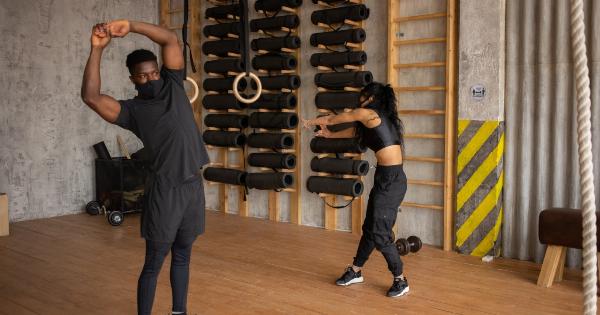Exercise has long been known to be beneficial for overall health and well-being. However, its impact on sleep inertia reduction and sleep quality is often overlooked.
In this article, we delve into the role of exercise in reducing sleep inertia and improving sleep quality, highlighting the various physiological and psychological mechanisms involved.
What is Sleep Inertia?
Sleep inertia refers to a transitional state of reduced cognitive and sensory-motor performance that occurs immediately after awakening from sleep.
It is characterized by feelings of grogginess, disorientation, and impaired alertness, which can hinder the ability to function optimally upon waking up. Sleep inertia can last anywhere from a few minutes to a couple of hours, depending on various factors such as sleep duration, sleep stage, and individual differences.
The Link Between Exercise and Sleep Inertia Reduction
Studies have found a strong link between regular exercise and diminished sleep inertia.
Engaging in moderate-intensity aerobic exercise, such as brisk walking, jogging, or cycling, has been shown to significantly decrease the duration and severity of sleep inertia. This reduction in sleep inertia can be attributed to several factors:.
1. Enhanced Blood Flow
Exercise promotes better blood circulation, including increased blood flow to the brain.
This improved circulation helps deliver oxygen and nutrients more efficiently to the brain cells, thereby accelerating the recovery phase from sleep and reducing sleep inertia.
2. Balancing Neurotransmitters
Physical activity stimulates the release of various neurotransmitters, such as dopamine, serotonin, and norepinephrine, which play crucial roles in regulating mood, sleep, and wakefulness.
Regular exercise helps maintain a healthy balance of these neurotransmitters, leading to improved sleep quality and reduced sleep inertia upon waking.
3. Hormonal Regulation
Exercise has a positive effect on hormone regulation, particularly with regard to sleep-related hormones.
Physical activity promotes the release of endorphins, often referred to as “feel-good” hormones, which can help alleviate stress and anxiety, leading to a more restful sleep and a smoother awakening process.
4. Body Temperature Regulation
During exercise, the body’s core temperature rises. This increase in body temperature stimulates the production of melatonin, a hormone closely associated with the sleep-wake cycle.
Regular physical activity helps regulate melatonin secretion, promoting better sleep quality and reducing the severity of sleep inertia.
Improving Sleep Quality Through Exercise
In addition to reducing sleep inertia, exercise also plays a crucial role in improving overall sleep quality. Here are some mechanisms through which exercise achieves this:.
1. Sleep Duration and Efficiency
Engaging in regular exercise has been shown to increase total sleep time and improve sleep efficiency.
Studies have found that individuals who engage in moderate-intensity aerobic exercise experience fewer episodes of insomnia and have an overall increase in sleep duration.
2. Sleep Architecture
Exercise can positively influence various stages of sleep, particularly deep sleep. Deep sleep is essential for physical restoration, immune function, and memory consolidation.
Regular exercise can promote deeper and more restorative sleep, leading to enhanced cognitive function and overall daytime alertness.
3. Sleep Disorders Management
Exercise has been found to be effective in managing various sleep disorders, such as insomnia, sleep apnea, and restless leg syndrome.
Regular physical activity can help alleviate the symptoms associated with these conditions, leading to improved sleep quality and reduced sleep disturbances.
4. Stress Reduction
Physical activity is known to be an effective stress management tool. Regular exercise helps reduce the levels of stress hormones, such as cortisol, in the body.
By reducing stress, exercise can significantly improve sleep quality and promote a more relaxed state upon awakening.
Developing an Exercise Routine for Improved Sleep Quality
If you’re looking to enhance your sleep quality and reduce sleep inertia through exercise, here are some guidelines to keep in mind:.
1. Choose Activities You Enjoy
It’s crucial to engage in physical activities that you genuinely enjoy.
Whether it’s jogging, dancing, swimming, or playing a sport, finding exercises that you find pleasure in increases the likelihood of sticking to your routine and reaping the sleep benefits.
2. Consistency is Key
To maximize the impact of exercise on sleep quality, consistency is paramount. Aim for at least 150 minutes of moderate-intensity aerobic exercise or 75 minutes of vigorous-intensity exercise per week.
Spread your workouts across the week for optimal results.
3. Time Your Workouts
While exercise at any time of the day is beneficial, it’s advisable to avoid intense workouts right before bedtime. The stimulating effects of exercise can make it harder to fall asleep.
Aim to complete your exercise session at least a few hours before bedtime to allow your body to cool down and prepare for sleep.
4. Consider Strength Training
In addition to aerobic exercise, incorporating strength training into your routine can further improve sleep quality.
Resistance exercises, such as weightlifting or bodyweight workouts, have been shown to promote better sleep patterns and reduce sleep disturbances.
By understanding the role of exercise in reducing sleep inertia and improving sleep quality, you can harness the power of physical activity to optimize your overall well-being.
The combination of reduced sleep inertia and enhanced sleep quality can lead to increased daytime productivity, improved mood, and better overall health.






























